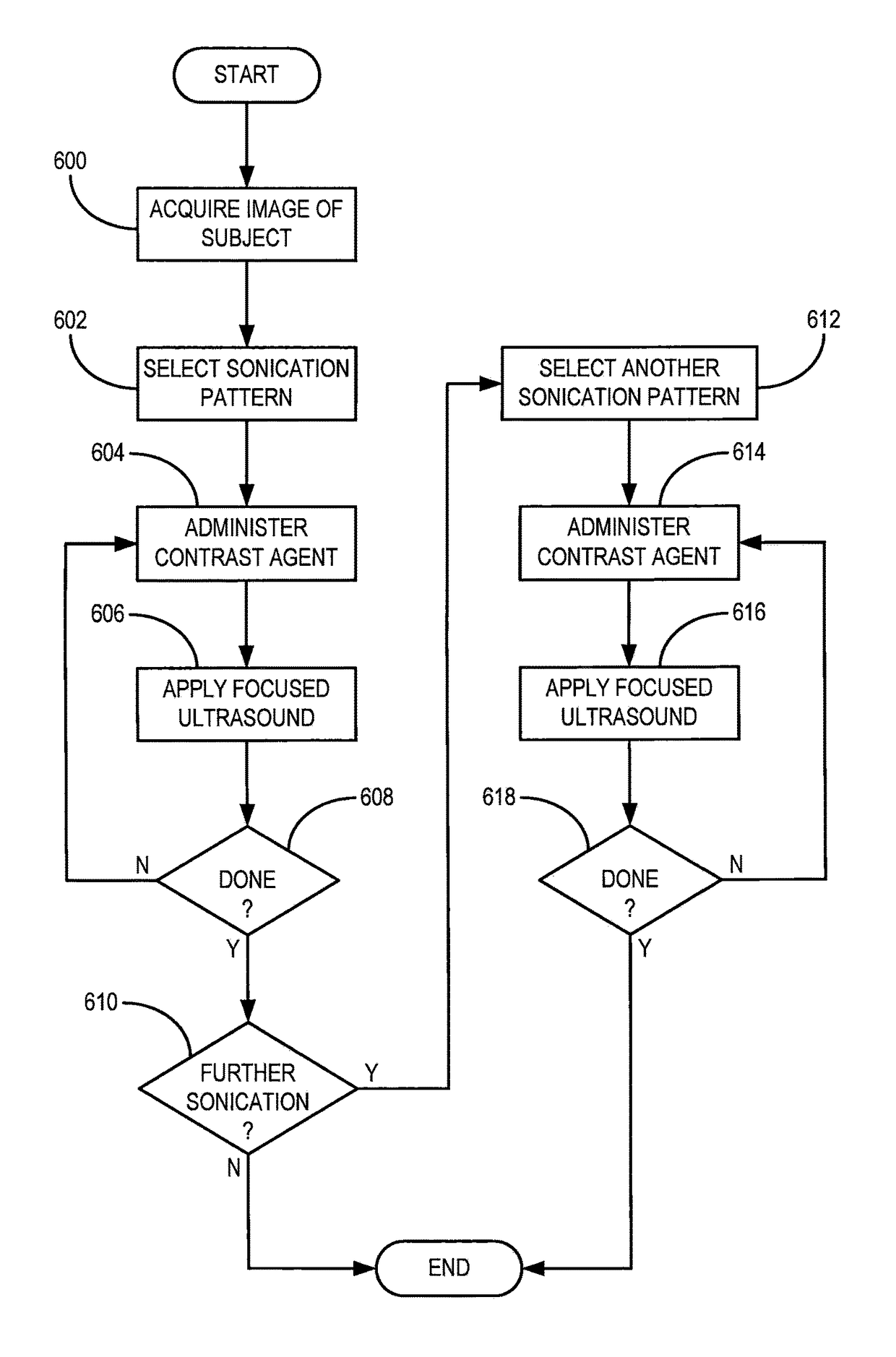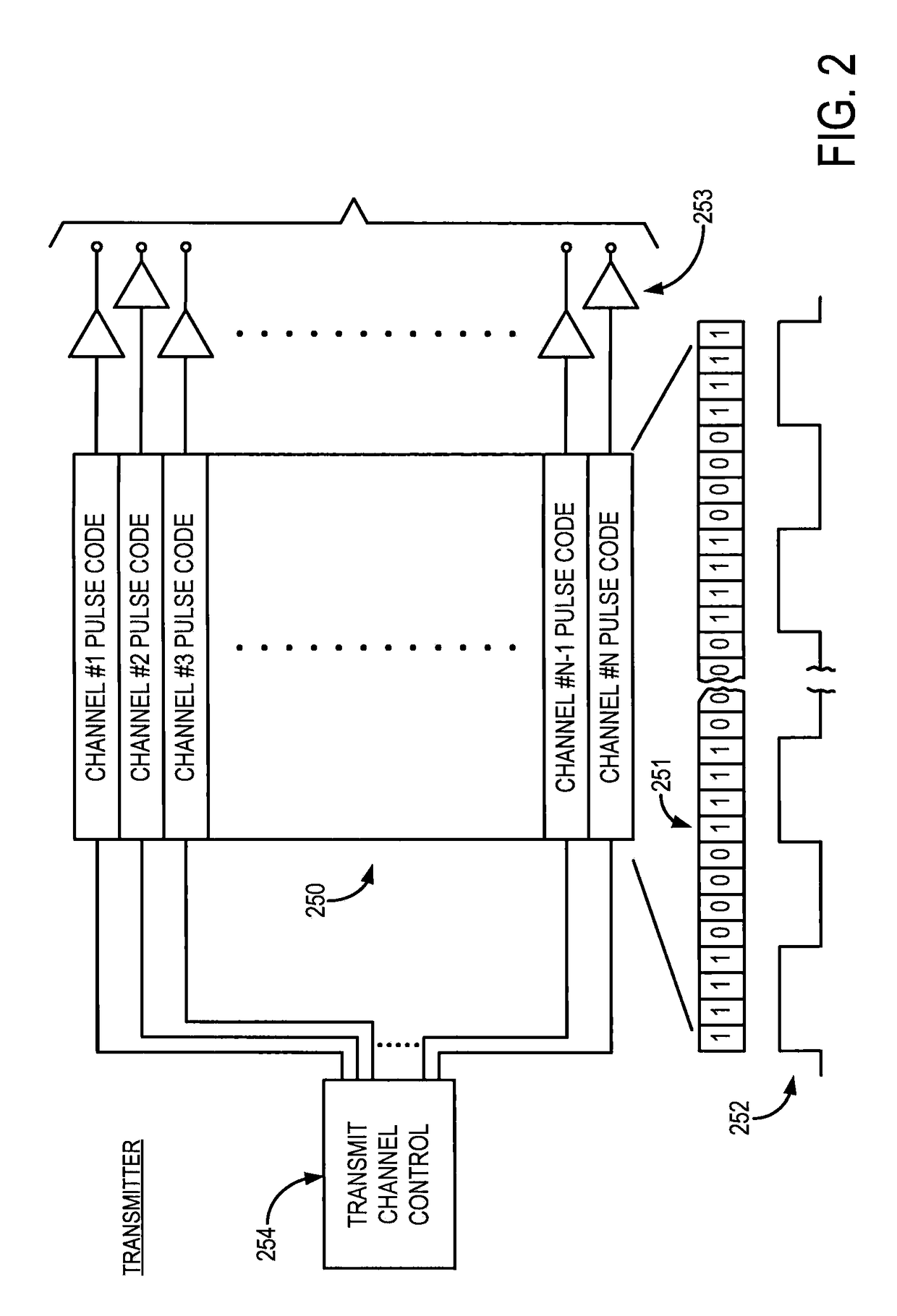Method for modifying glomerular permeability and function with focused ultrasound
a glomerular permeability and focused ultrasound technology, applied in ultrasonic/sonic/infrasonic diagnostics, applications, therapy, etc., can solve the problems of severe heart failure, high one-year mortality of patients resistant to conventional kidney therapy, and disruption or breakage of the blood-brain barrier, so as to enhance the function of the dynamically changing filtration properties of the glomerular barrier and alter the glomerular ultrafiltration coefficient
- Summary
- Abstract
- Description
- Claims
- Application Information
AI Technical Summary
Benefits of technology
Problems solved by technology
Method used
Image
Examples
Embodiment Construction
[0030]Referring particularly to FIG. 1, an ultrasonic imaging system includes a transducer array 111 comprised of a plurality of separately driven elements 112 which each produce a burst of ultrasonic energy when energized by a pulse produced by a transmitter 113. The ultrasonic energy reflected back to the transducer array 111 from the subject under study is converted to an electrical signal by each transducer element 112 and applied separately to a receiver 114 through a set of switches 115. The transmitter 113, receiver 114, and the switches 115 are operated under the control of a digital controller 116 responsive to the commands input by the human operator. A complete scan is performed by acquiring a series of echoes in which the switches 115 are set to their transmit position, the transmitter 113 is gated on momentarily to energize each transducer element 112, the switches 115 are then set to their receive position, and the subsequent echo signals produced by each transducer el...
PUM
 Login to View More
Login to View More Abstract
Description
Claims
Application Information
 Login to View More
Login to View More - R&D
- Intellectual Property
- Life Sciences
- Materials
- Tech Scout
- Unparalleled Data Quality
- Higher Quality Content
- 60% Fewer Hallucinations
Browse by: Latest US Patents, China's latest patents, Technical Efficacy Thesaurus, Application Domain, Technology Topic, Popular Technical Reports.
© 2025 PatSnap. All rights reserved.Legal|Privacy policy|Modern Slavery Act Transparency Statement|Sitemap|About US| Contact US: help@patsnap.com



